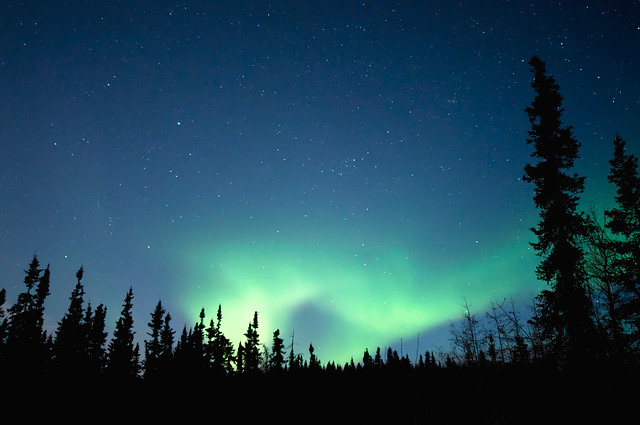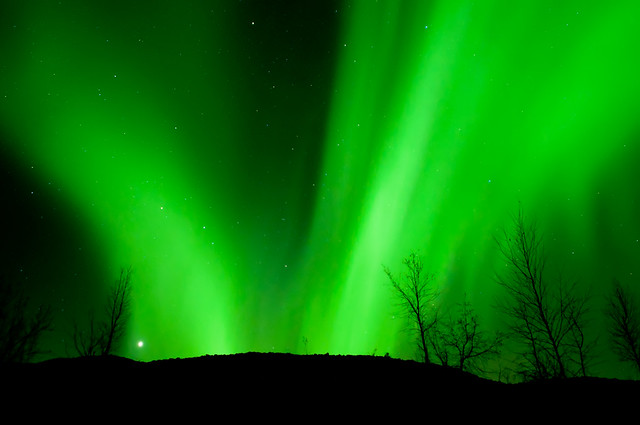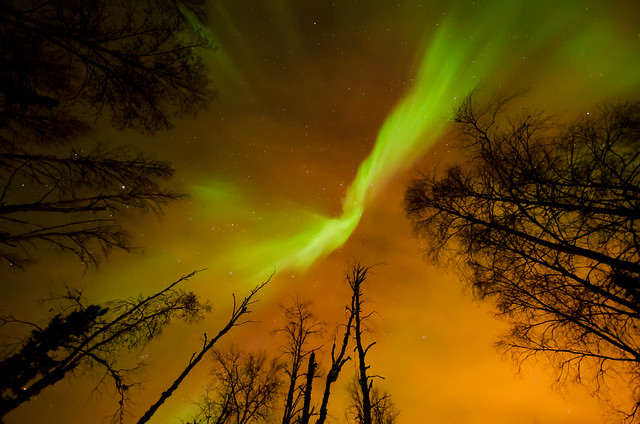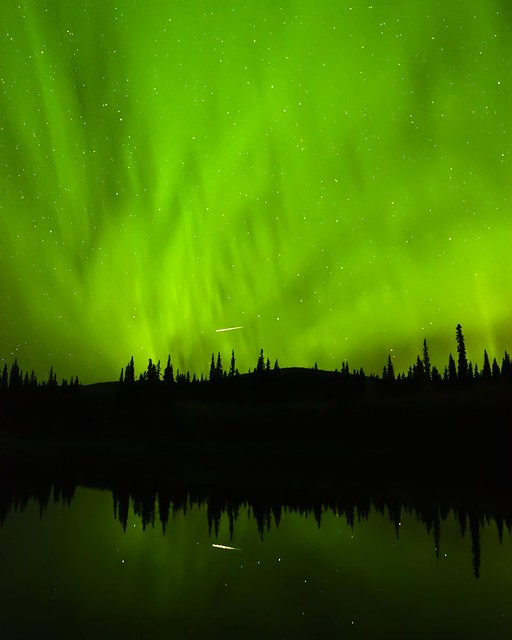
Caveat: There are a lot of ways to get the same result. Don't get caught up in the method. This is how I do it, and I present it as a starting point you can build off of.
Step 1: Visualize. Always. Know what you want your picture to look like before you ever touch the camera. For aurorae, that probably means you want the brightest part of the lights to be slightly above a midtone (but that's not a given! Think about other things you could do...) So if you were to do something silly like try to meter off the aurora, you'd turn the exposure to one stop above the meter reading. But that would be silly because you don't want to be futzing about with a meter while the aurora is going, that's a distraction. The point here is that you should have an idea of how bright the aurora should look on your screen and histogram, not that you should focus on getting it exactly 1 stop above midtone or something like that.

Set your camera to full manual mode. There are three ways you can set the exposure: Aperture, shutter speed, and sensitivity (ISO). For aurorae you're probably just going to have the aperture as wide open as it'll go, or perhaps down a stop to help with sharpness, so you basically consider aperture as non-adjustable. Therefore you can only adjust the exposure via shutter speed or sensitivity.
Shutter speed should be matched to the time scale that the aurora is changing. Otherwise all the fine structure will blur out and you'll just get green fog. For a dynamic aurora, that might mean one second, whereas for quiet times that might be 30 seconds. Just take a picture and look at it on your preview screen. Do you see all the details or are they blurred out? If they're blurred out, use a faster shutter speed, if not, you might be able to use a slower shutter speed, which will allow you to use a lower sensitivity and get a less noisy picture. Set the shutter speed as slow as you can while still being able to see structure/detail in the aurora. A little noise is better than featureless green fog. And you can get away with running more noise reduction than you would with pictures of other things.

That leaves ISO. Check the histogram and the preview screen and turn up the sensitivity however much you need to mach your visualization from Step 1. The goal is to not have anything clipped off either side of the histogram, but on a dark night with no light pollution of course you're not going to be able to do that because the dark parts of the sky and ground will be off the left and the stars will be off the right, so just look to make sure you have a good portion of the exposure somewhere in the middle of the histogram. Compare that with the preview image. If it's not bright enough, increase the sensitivity; if it is, maybe you can get away with lower sensitivity (which means less noise). Eventually you'll get to the point where raising the ISO any more means unacceptable noise, and you'll be better off trying to increase the exposure in Photoshop or something. You'll only learn where the cutoff is from experience as you learn your camera's noise characteristics at different sensitivities.
FWIW, I always adjust all my settings in whole-stop increments because it's easier to think about, thus faster to respond to changing conditions and less 'in the way' of the creative process.

That's all you need to do to get the exposure right. Open the aperture as much as you can, set the shutter speed to match the auroral time scale, and raise the sensitivity until it's bright enough. Easy. Of course, that only gets you a good exposure, it doesn't guarantee the image will be interesting. There are a kajillion images out there of the horizon with the aurora above it, and maybe a mountain. Unless the aurora is doing something really unusual, you're going to have to do better than that. Finding a good foreground object is a good start. I'm still exploring how to actually take an interesting picture of the aurora, and I'm not yet sure how to do it. The images I've included here got it right, I think, for one reason or another.
No comments:
Post a Comment